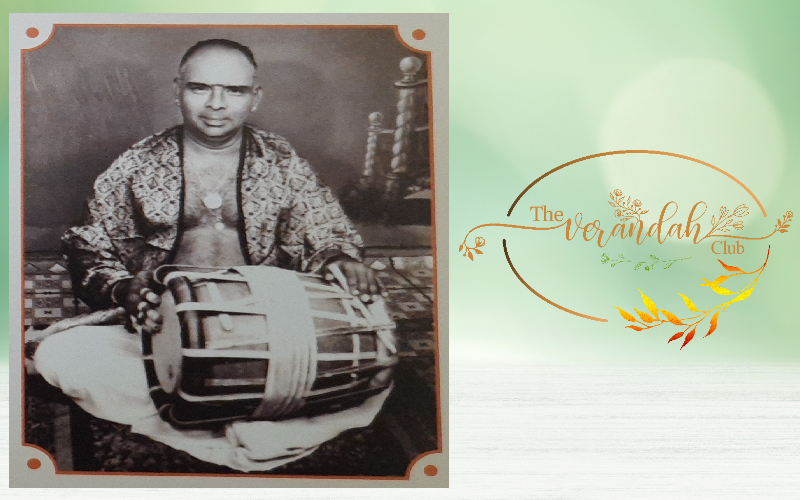
Valangaiman Shanmugasundaram Pillai
The legendary Thavil artiste, Valangaiman Shanmugasundaram Pillai was neither born in Valangaiman nor did he spend his childhood years in Valangaiman, a town in Thiruvarur district. He was born in Segal Madappuram – a village near Thiruthuraipoondi on 02 Apr 1920. His family moved to Srilanka when he was five years old. His tutelage started under his father, V. Arumugam Pillai and later he continued his training under Inuvil Chinnathambi Pillai and Rajagopala Pillai. He gave his debut performance when he was 15. He later joined the legendary Vidwan Nachiarkoil Raghava Pillai for advanced training. Early in his career he was known as ‘Yazhpanam Shanmugasundaram Pillai'.
Needamangalam Meenakshisundaram Pillai, an artiste of great genius who became a legend in his own lifetime was the Paramaguru of Valangaiman Shanmugasundaram Pillai. In the music field, the term ‘Nayanakarar' referred only to Thiruvavaduthurai Rajaratnam Pillai and the term ‘Thavilkarar' referred only to Needamangalam Meenakshisundaram Pillai. Born on 03 Sep 1894, and hailing from a family of musicians, Meenakshisundaram Pillai honed his skills while playing as a ‘set Thavil’ for Nagapattinam Subbiah Pillai. The Nagaswara Vidwan treated Meenakshisundaram Pillai as his own student and helped him master the intricacies of Laya. His career graph grew quickly as he played together with several legends of that day including Semponnarkoil Ramaswami Pillai and Madurai Ponnusami Pillai. He joined the Thiruveezimizhalai brothers and is said to have performed together with them for thirty years. His playing was regarded as the ‘third Nagaswaram'. He later began freelancing and was the first player to be regarded as ‘Special Thavil'. Having ruled the roost as the leader of the pack, he won several accolades including titles such as ‘Tala Praveena' and ‘Abhinava Nandeesar'. He passed away on 12/2/1949 leaving behind him a rich musical legacy.
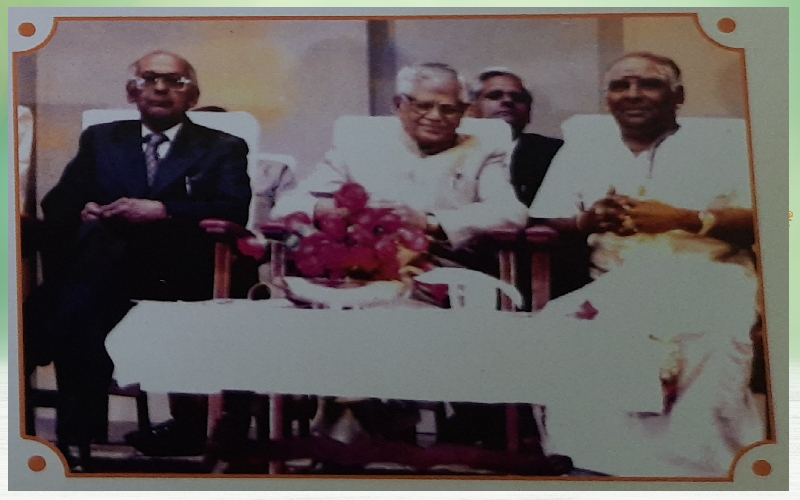
If Valangaiman Shanmugasundaram Pillai came to be regarded as the numero uno in his field, he inherited that status from his Guru – Nachiarkoil Raghava Pillai. Raghava Pillai was both known for his skilful playing and his pleasant demeanour on and off the stage. Trained under the legendary Needamangalam Meenakshisundaram Pillai, he later assisted his Guru as the second Thavil and eventually went to marry his Guru's daughter.
The Nagaswaram artistes would postpone their concert dates at the All-India Radio if Raghava Pillai was unavailable on the scheduled date. Fortunately, a few scintillating recordings of his playing were made available even today. In 1964, Tamil weekly Ananda Vikatan wrote, “The Gods wanted to listen to Karukuruchi Arunachalam along with Raghava Pillai. Hence they summoned him to Swarga Loka within a few days of the passing of the Nagaswaram legend.” Apart from making a mark as a player, his contributions as a Guru were truly remarkable. His legacy of disciples included several legends such as Valangaiman Shanmugasundaram Pillai, Yazhpanam Dakshinamurthi, Perumpallam Venkatesan and Thanjavur T. R. Govindarajan.
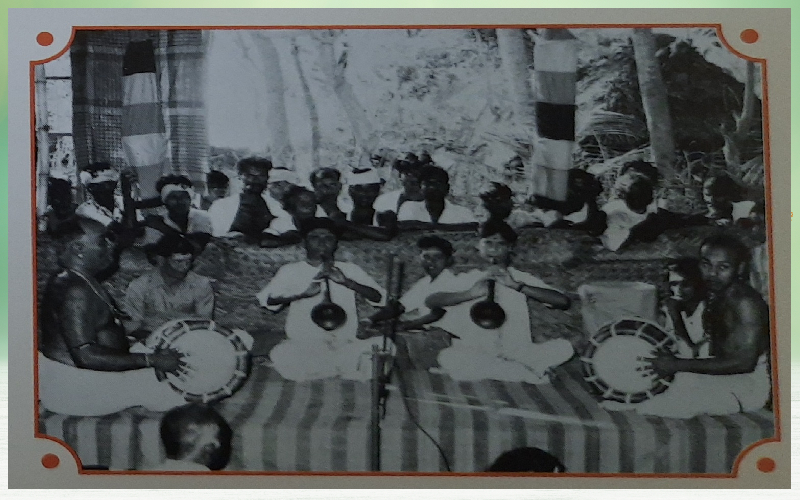
He performed alongside his Guru. This gave him the opportunity to play for legendary Nagaswaram artistes such as Thiruvavaduthurai Rajaratnam Pillai and Thiruveezimizhalai brothers. Playing alongside his Paramaguru Needamangalam Meenakshisundaram Pillai and his Guru Nachiarkoil Raghava Pillai brought much attention to him as a Thavil artiste. He quickly established himself as a front-rank player and was much sought after to perform across South India despite living in Jaffna. Continuous engagements forced him to shift his base to Valangaiman in Tamil Nadu. By the time his career reached its pinnacle, the prefix ‘Valangaiman’ got firmly attached to his name and the state of Tamil Nadu accepted him as its own artiste.
He inherited from his Gurus not only the art of playing Thavil but also inherited the stature of his Gurus and came to be the foremost Thavil player of his times. His playing was a unique blend that contained strokes that dripped with inherent sweetness yet not compromising the majesty of the instrument. Present day leading Thavil Vidwan, T. R. Govindarajan says, “The Thavil Syllable ‘Tha' was often equated to my Guru, Nachiarkoil Raghava Pillai. If there was one artiste who could reproduce it with the same effect – it was Valangaiman Shanmugasundaram Pillai. He was a role model for the artistes of my generation both in his behaviour as well as his playing.”
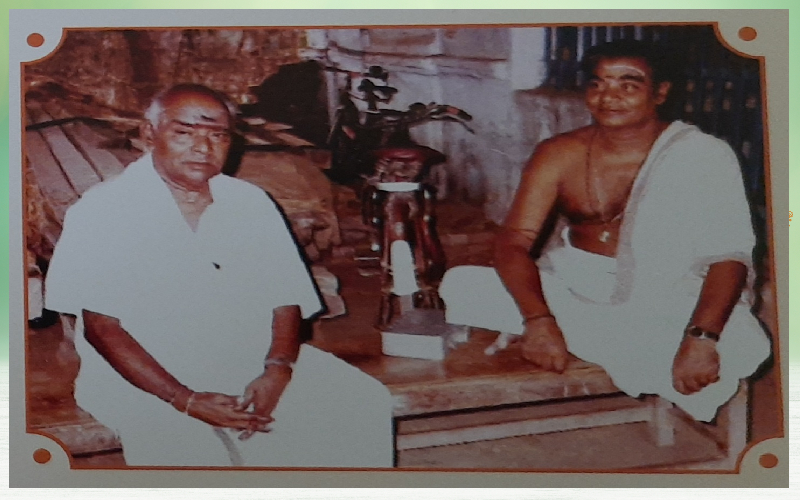
V. Seetharama Pillai, Shanmugasundaram Pillai's uncle, was regarded as a master in complex rhythmic calculations. Despite honing his skills under the master and achieving commendable competence in various Nadais and the lesser known of 108 Talas, Shanmugasundaram Pillai never set out to display his ability in his concerts. He was a true team player and would play only the patterns that would enhance the overall aesthetics of the concert. In a published interview he said, “Should not music appeal to heart? Would rhythmic acrobatics be able to achieve this? Pyrotechnics may appeal to the mind, but the Sowkhyam (the ease) would be lost.”
A good accompaniment is not the one that has patterns that numerically fits the beat. It involves embellishment, enhancement and elevation of the overall musical experience of the concert. It considers the concert ambience, comfort of the Nagaswara artiste, overall mood of the musical piece played and the ability of the co-percussion artistes. Even in short bursts of Chatustra Nadais played during the raga elaboration one can easily understand Shanmugasundaram Pillai’s playing uplifting the listening experience. Making a mark with firm yet unobstructive strokes are the hallmark of his playing style. This can be seen even in the recordings where he has accompanied vocalists such as Sangita Kalanidhi Madurai T. N. Seshagopalan.
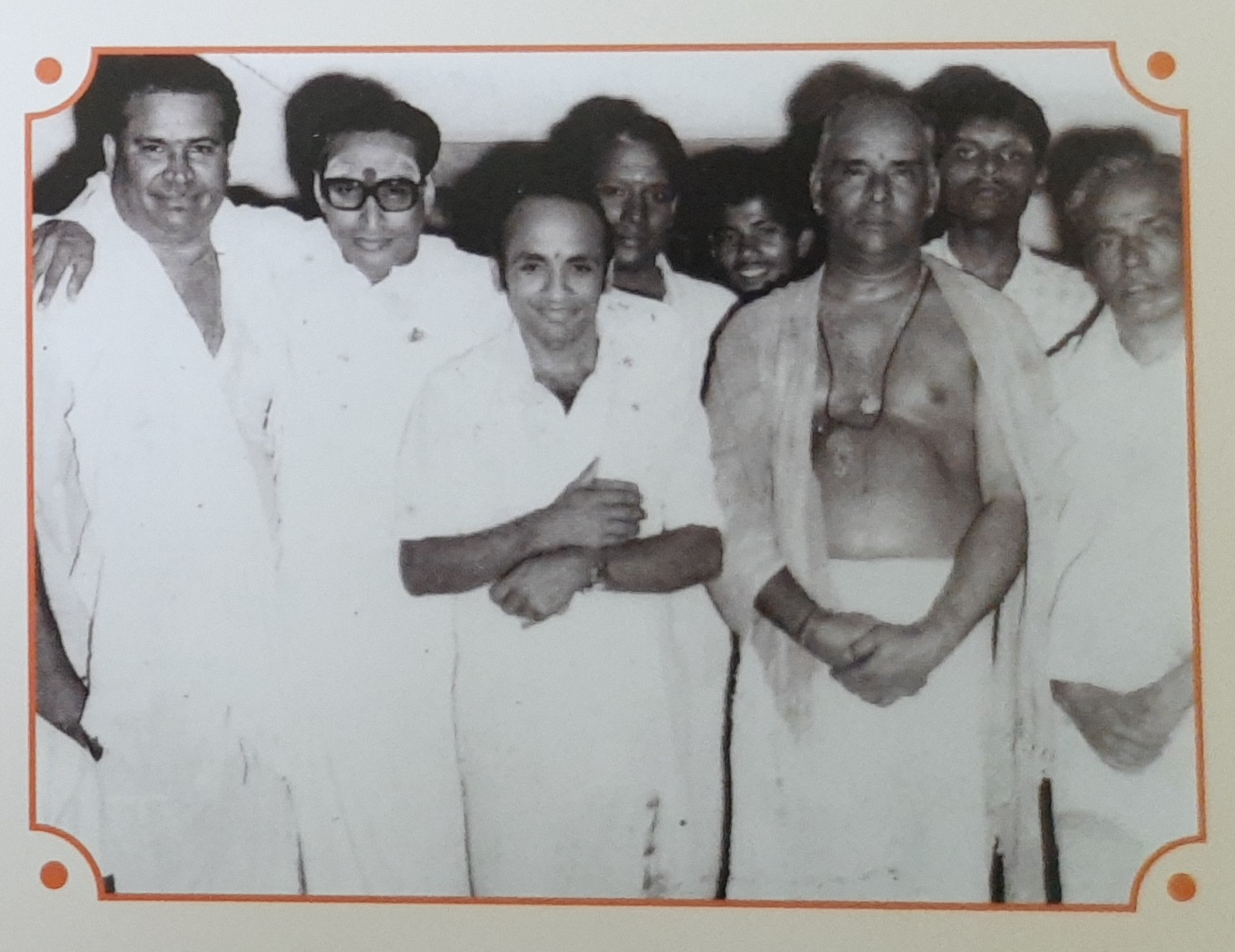
He forged several significant musical collaborations with several legendary Nagaswaram artistes of his time. One such partnership was with Sangita Kalanidhi Sheik Chinna Moulana. Leading Nagaswaram exponent Vidwan Kasim said, “My grandfather and Shanmugasundaram thatha played together for thirty-three years. In all those years Shanmugasundaram thatha had never enquired about the song list or the Tala in which he should play his Thavil solo. His playing was always apt for the occasion in length and content. They could totally understand each other just through body language.” He happily encouraged and accompanied upcoming talented musicians and took it on himself to ensure that their concert turned out to be a success.
Valangaiman Shanmugasundaram Pillai was seen as a trendsetter in many counts. One of his pioneering ventures was to play for instruments other than Nagaswaram. In the 1960s, he started accompanying the famous violin trio of L. Vaidyanathan, L. Subramaniam and L. Shankar. A newspaper report from 1969 read, “One might shudder to think of the Thavil for Violin Trio concert but the results of the experiment at Vani Mahal were surprisingly satisfactory. Valangaiman Shanmugasundaram accompanied the Trio with controlled softness without resorting to the stick. The highlight of the recital was a commendable exposition of the main Raga, Pavani and Sankirna Nadai Pallavi designed to extract work from the Thavil Vidwan. Shanmugasundaram easily rose to the occasion.” He also accompanied other artistes such as Flute Mali, N. Ramani, Mandolin Shrinivas, and Ganesh-Kumaresh.
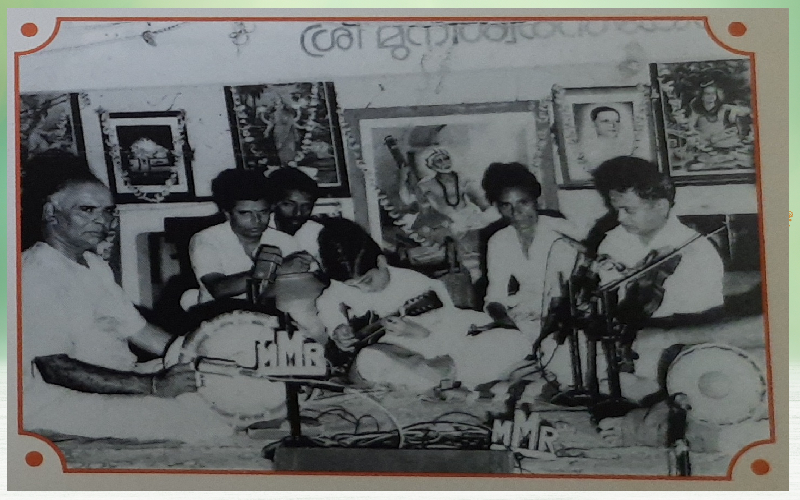
In the 1980s, Shanmugasundaram Pillai along with talented Mridangam player and his son-in-law, Thanjavur Upendran, played a significant role in the ascent of Child Prodigy U. Shrinivas’ career. An article from Sruti magazine said, “He was merely present at a Kumbakonam function to felicitate the young musical prodigy and he spoke a few words blessing the boy and suggesting that the music world should support the boy’s career development. Then someone suggested that he, Shanmugasundaram, should not restrict himself to providing verbal encouragement but step in and agree to play Thavil for the Mandolin wizard. Valangaiman quickly saw the justice of this suggestion and agreed to play for Shrinivas.” They went on to perform hundreds of concerts together.
While he came across as an amicable personality, he never compromised on his self-respect. Mr. Senthilkumar, a music aficionado and someone who moved closely with Shanmugasundaram Pillai, quoted, “When the famous Tamil movie, ‘Thillana Mohanambal’ won accolades to actor, T. S. Baliah for his role as a Thavil Vidwan, he attributed the success to him imitating Shanmugasundaram Pillai. When the actor mentioned this to the Thavil Vidwan, Shanmugasundaram Pillai immediately responded by asking him, “You have imitated me alright. But when did you see me stand submissively next to a Nagaswaram Vidwan with my hands folded?” Such was his self-respect.”
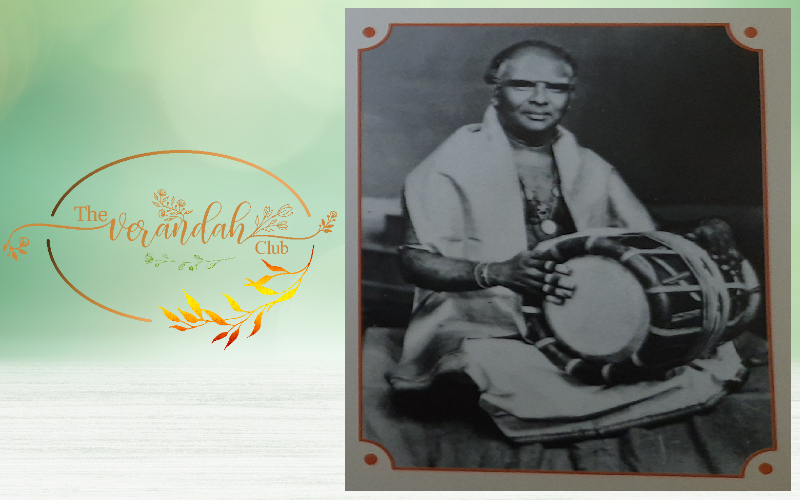
Valangaiman Shanmugasundaram Pillai passed away on 22 April 1994. In his glorious career spanning over five decades, several titles and awards adorned him. Notable among those titles were, ‘Kaliyuga Nandi’ and ‘Jatiswara Kalanidhi’. The Tamil Nadu government bestowed upon him the Kalaimamani award and honoured him by making him the State Artiste. The Music Academy presented him with TTK award in 1978. He was the first Thavil artiste to win the ‘Central Sangeet Nayak Akademie’ award in 1985. He trained several disciples. Notable among them were Kuzhikarai Ramakrishnan, Thiruveezimizhalai Chelliah, Thirukannamangai Padmanabhan, and Thiruvotriyur Balasundaram.
His son, S. Muruganandam and grandsons, Navaneetham and Dhanapal have carved a niche for themselves in the music field as instrument makers. His grandson, Thanjavur K. Praveen Kumar carries his legacy as a leading Mridangam Player in the field today.
NEXT ARTICLE